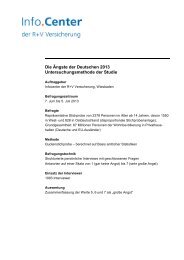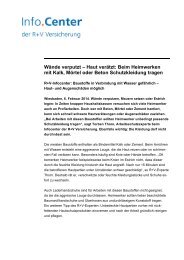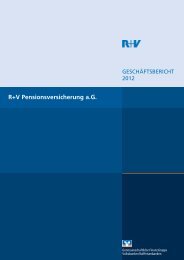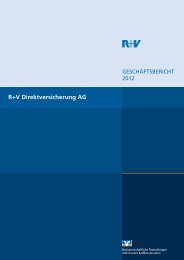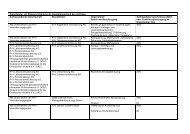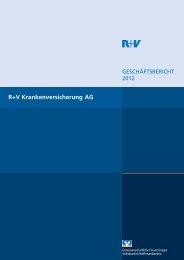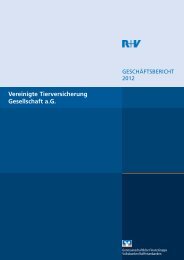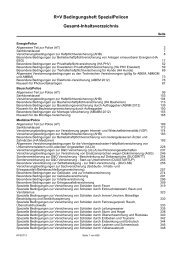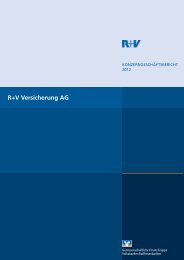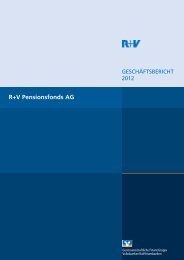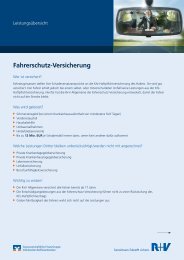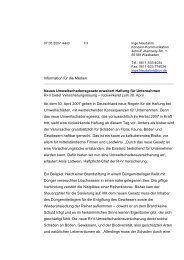R+V Versicherung AG Annual Report
R+V Versicherung AG Annual Report
R+V Versicherung AG Annual Report
You also want an ePaper? Increase the reach of your titles
YUMPU automatically turns print PDFs into web optimized ePapers that Google loves.
However, the events of September 11<br />
brought the positive development of this<br />
segment to a sudden halt. The largest<br />
insurance claim of all time did not just result<br />
in technical losses at a number of major<br />
direct insurers and reinsurers, it also<br />
brought the capital markets down with it.<br />
The second half of 2001 suffered further<br />
blows in the form of numerous large industrial<br />
claims such as the explosion of a fertilizer<br />
plant near Toulouse/France and the<br />
explosion at a steelworks in Wales. In contrast,<br />
the number of claims arising from natural<br />
disasters in the year under review was<br />
low.<br />
Central and Eastern Europe<br />
The Central and Eastern European market<br />
is currently undergoing radical reform. The<br />
contraction of the global economy was<br />
scarcely felt in the Central European and<br />
Baltic states, due in particular to the efforts<br />
of those countries hoping to join the EU.<br />
The upward trend of the past year remained<br />
largely constant, driven by strong domestic<br />
demand. Poland was the exception, with<br />
the economy experiencing a considerable<br />
cooling-off on account of the restrictive<br />
rates set by its central bank. This led to<br />
stagnation, in contrast to the high growth<br />
rates of previous years.<br />
9<br />
Most countries in Central and Eastern<br />
Europe benefited from the rapid progress<br />
of the economic reforms and privatization<br />
measures, which have made them less<br />
susceptible to negative effects from abroad.<br />
In addition, the extremely high deficits in<br />
the balance of payments of some of these<br />
countries had little impact as they were still<br />
matched by a high inflow of foreign direct<br />
investors. The level of foreign debt was<br />
correspondingly low, and exchange rates<br />
generally stable.<br />
Russia did surprisingly well once more, with<br />
its growth rate increasing in the course of<br />
the year. The national budget situation<br />
eased and the foreign debt problem also<br />
declined as a result of the extremely high<br />
balance of payment surplus. Investment in<br />
the private sector also surged for the third<br />
year in a row.<br />
The other CIS states also presented<br />
astonishingly good results. After what<br />
was for some a prolonged lean period<br />
with sluggish growth or even slumps in<br />
production, real GDP (gross domestic<br />
product) increased throughout the region.<br />
The reinsurance market developed positively<br />
in the past fiscal year. In 2001, Russian<br />
insurance companies alone collected<br />
approximately 276 billion roubles (€10.4<br />
billion), 62% more in premiums than in the<br />
previous year. The market in general began<br />
to harden, pushing up rates substantially in<br />
certain sub classes, especially for disaster<br />
cover.



